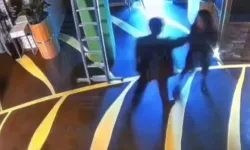Protesters accused local authorities of covering up the incident to protect the landlord and stormed city council meetings to demand answers. Some created private Facebook pages and frequented blogs to discuss the intricacies of that fateful night, turning what began as a local murder case into a national sensation.
Opening statements are being made today in Norfolk County, south of Boston. Daniel Medwed, a professor of criminal law at Northeastern University, said the intense publicity of the case has made the process of selecting an impartial jury difficult, a process that could end up selecting jurors who are familiar with O'Keefe's killing or who have read about it but have not formed an opinion. University.
"It's fair to say that a lot of people in Massachusetts know about this case," Medwed told CNN. "In the jury selection process, lawyers will say, 'Can you still be fair based on what you know? It's possible that there are 12 citizens who reside in this county who are not reconciled. their opinion."
The case has sharply divided the 24,000-person Boston suburb and neighboring towns.
As the trial continues at the Norfolk County Superior Court building in Dedham, Massachusetts, here are the highlights.
The case comes down to a critical six-hour window
The case dates back six hours before O'Keefe's body was found that winter night. Surveillance footage captured video of her and Read on January 28, 2022, on a night out drinking at two Canton bars and meeting friends, including a fellow officer.
Shortly after midnight, the couple got into Read's SUV and drove to O'Keefe's colleague's home on Fairview Road in Canton for an after-party, according to court documents.
According to court documents, Read, 44, said that after dropping O'Keefe off at the Fairview Road home, he went home because he wasn't feeling well. He said he then woke up at dawn and panicked when he realized she was not home.
She told investigators she then called two female acquaintances and three women drove through the streets of Canton in almost total darkness looking for O'Keefe and calling his name, according to court documents.
Read spotted her boyfriend's snow-covered body in the front yard of the house and ran to give him CPR, according to court documents.
Read and her legal team, including attorneys Alan Jackson and David Yannetti, argued that their client was framed. Jackson told CNN that he believes O'Keefe entered the Fairview Road home that night and got into an argument with someone inside.
"I think that confrontation became physical and he was beaten until he lost consciousness," Jackson said. "It was a cover-up... he was killed inside the house and his body was put outside."
But the prosecution claims the couple got into an argument that led to O'Keefe getting out of the Lexus, after which a drunken Read hit him with his vehicle and fled, leaving him for dead in the snowy cold.
Read's lawyers said in court documents and in court that they believe one of the two female acquaintances, the homeowner's sister-in-law, was part of a cover-up to protect the people in the house and accuse Read of the crime.
According to court documents, a forensic search of the woman's phone revealed that hours before O'Keefe was found, she had Googled the phrase "How much longer to die in the cold".
However, the woman has not been charged with any crime and her lawyer, Kevin Reddington, told local media that allegations that she was involved in a cover-up were unfounded.
Meanwhile, Norfolk District Attorney Michael Morrissey said allegations that a network of law enforcement officers conspired to frame Read were not plausible.
"These people were not part of a conspiracy and they certainly did not commit murder or any crime that night," Morrissey said. "The idea that multiple police departments, EMTs, fire personnel, medical examiners and prosecutors' offices came together... has to be seen as a grand conspiracy; it is completely contrary to the evidence and a desperate attempt to redefine guilt."
Tension over the case has divided the town
The trial has been marked by months of legal wrangling.In the past week, both the defense and the prosecution have made a series of motions regarding the evidence they want to include or exclude from the trial. Prosecutors, for example, are seeking to show jurors details of the couple's December 2021 trip to Aruba, arguing that it shows strains in the couple's relationship.
The US Attorney's Office for the District of Massachusetts has launched a federal investigation into Read's arrest and prosecution.In February, federal authorities released nearly 3,000 pages of documents related to the investigation. Much of the information has been withheld from the public.
And last month, the Massachusetts State Police announced an investigation into a state trooper involved in the incident. The agency did not elaborate on whether the alleged violation was related to the charges against Read.
The investigation was announced the same week Read's defense team alleged that the trooper failed to fully disclose his relationship with key witnesses in the case. Norfolk County Assistant District Attorney Adam Lally accused the defense of using the relationships to distract from Read's alleged guilt, CNN affiliate WFXT reported.
"This is a three-card Monte trick. You know, card trick. In the corner, on the edge. Look at all this. Look at this relationship. Look at this relationship," Lally said.
In November, after a special town meeting focused on Read's case, Canton residents voted for an independent investigation into the police department.At the time, Canton Police Chief Helena Rafferty told CNN that investigators had found "absolutely no evidence of a cover-up of John O'Keefe's tragic death."
Meanwhile, protesters wearing "Read Free Karen" t-shirts and carrying signs with similar messages attended the pre-trial hearings. In response, Norfolk County Superior Court Judge Beverly Cannone ordered the creation of a "buffer zone" around the courthouse to keep protesters away and restrict what they could wear.
"No one may demonstrate in any way, including carrying signs or banners, within 200 feet of the courthouse complex during the hearing of this case. .... No one shall be permitted to wear or display any buttons, photographs, clothing or clothing "insignia related to any trial participant," the order read.
In organizing the buffer zone, Cannone said there were documented cases of protesters shouting at witnesses and confronting family members outside the court.
"There is a significant risk that the defendant's right to a fair trial will be jeopardized if prospective jurors are exposed to the protests and messages displayed on the placards," Cannone wrote.
Read's supporters argued that the verdict violated his First Amendment rights. Early Tuesday morning, as they do every time he appears in court, they gathered in the streets outside the courthouse in tracksuits and banners, shouting "We've got your back" and "Go get them" as he arrived. Read, flanked by his lawyers, put his hand over his heart in silent approval.
This time, however, the protesters stood behind the barrier the judge had mandated. "No First Amendment Rights Beyond This Point," a sign read.














